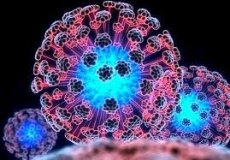Medical expert of the article
New publications
Scientists have developed a new strategy to fight HIV
Last reviewed: 01.07.2025

All iLive content is medically reviewed or fact checked to ensure as much factual accuracy as possible.
We have strict sourcing guidelines and only link to reputable media sites, academic research institutions and, whenever possible, medically peer reviewed studies. Note that the numbers in parentheses ([1], [2], etc.) are clickable links to these studies.
If you feel that any of our content is inaccurate, out-of-date, or otherwise questionable, please select it and press Ctrl + Enter.

T-helper cells support the body's immune system by organizing defenses against HIV infection. When the number of helper T-cells decreases, the body becomes vulnerable to disease.
Not all T cells are “experienced”; some have not yet encountered infection. Scientists at the National Center for Biodefense and Infectious Diseases in Mason have discovered why HIV preferentially targets T helper cells to migrate to other tissues in the body.

“HIV is capable of killing most memory T cells,” says Wai Feng Wong, a PhD candidate in biology and lead author of the study. “We want to find out what the difference is between memory T cells and naive T cells.”
The results of the scientists' research will be published in the next issue of the Journal of Biological Chemistry.
"I think our findings will have an impact on the whole direction of research in this area," Wong comments.
Memory T cells and naive T cells are very similar. Experts tried to understand the difference between memory T cells and naive T cells at the molecular level.
Memory T cells are in constant motion, they are always mobile. This is what makes them attractive to the HIV virus, so they are more vulnerable than naive T cells.
The movement of memory cells is organized according to the principle of a "treadmill" - from the inside it looks like a stream of water falling down in a waterfall. The bone supporting the cell - the cytoskeleton - acts as a muscle.
For a long time, we could not understand how HIV could get into the center of the cell, get to its nucleus. How the virus bypasses the cytoskeletal barriers - practically penetrates the wall - was an absolute mystery.
It turns out that with the help of the receptor, HIV jumps over the "wall". Unlike memory cells, naive T cells are not as sensitive, so their nucleus is more difficult to reach. Their cytoskeleton is different from memory cells, so in this case the virus will not be able to use the "treadmill" principle.
The HIV virus's ability to mutate makes it virtually invulnerable to drugs. If scientists shift their focus slightly from the virus itself to the cells it preys on, they may finally be able to develop a new, effective way to combat the disease.
"Basically, our new research strategy is aimed at understanding why the HIV virus is so resilient. If we can answer this question, we can cut off the virus's oxygen supply and leave it without support. However, we need to maintain a strict balance so as not to destroy healthy cells along with the virus," the scientists say.


 [
[